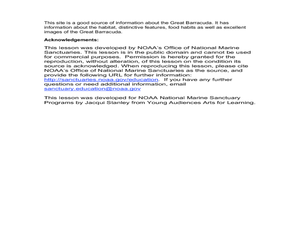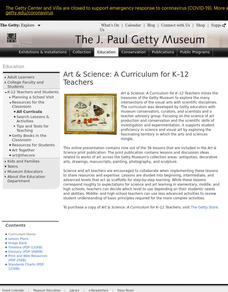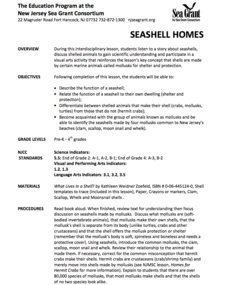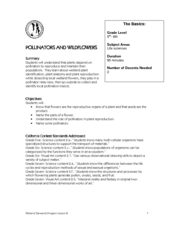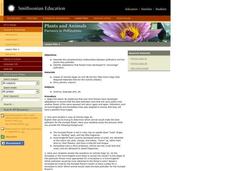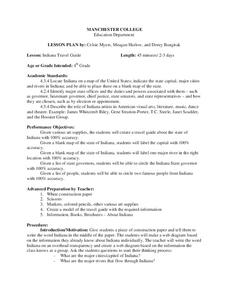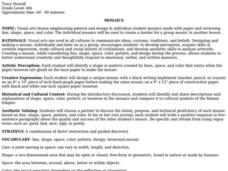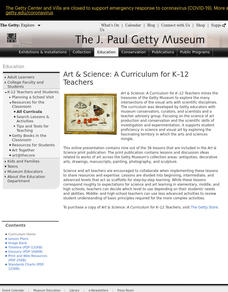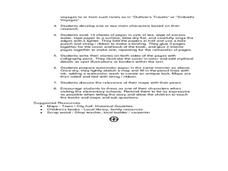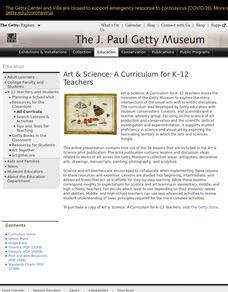Curated OER
Body Basics
Youngsters discuss the basics for appropriate bodily behavior in the classroom. This lesson addresses the importance of keeping one's hands to yourself, raising your hand when wanting to speak, and keeping your eyes on teacher when they...
Curated OER
The Envelope Guessing Game
Students work with a partner by using the symbol bracelets from lesson #1. They that has the number #1 look at the object keeping it hidden from student #2. Student number 2 then ask questions in order to determine the qualities and...
Curated OER
The Great Barracuda
Young scholars explore oceanography by researching the great barracuda. In this animal life lesson plan, students read several vocabulary terms dealing with ocean life and examine a drawing of a barracuda. Young scholars examine the...
Curated OER
Clearly Classified
Young scholars review the classification system for living organisms and apply it the classification of insects and flowers in the still life by Ambrosius Bosschaert. They create a chart classifying the animals and plants in the painting...
Curated OER
Seashell Homes
Pupils listen to a story about seashells. They discuss shelled animals. Learners describe the function of seashell. Pupils relate the function of a seashell to their own dwelling. They differentiate between shelled animals that make...
Curated OER
Pollinators and Wildflowers
Students explore how plants depend on pollinators to reproduce. In this pollination lesson students dissect a local flower and collect and identify pollinating insects.
Curated OER
Marshland Ecosystems
Students identify animals in ecosystem depicted on 16th Century ceramic basin and classify them as herbivores, carnivores, or omnivores based on physical characteristics and prior knowledge, determine which life forms in ecosystem are...
Curated OER
18th Century Microscope
Students examine a microscope from the 18th century. In this microscope lesson, students investigate how it works, what it was used for and how the tool has evolved through the years. Students also build knowledge on how compound...
Curated OER
Plants and Animals: Partners in Pollination
Students describe the complementary relationships between pollinators and the plants they pollinate, identify adaptations that flowers have developed to "encourage" pollination, and create and draw their own "designer" flowers.
Curated OER
Symmetry in Paper Airplanes
Students explore symmetry. For this geometry and scientific inquiry lesson, students design paper airplanes with middle line symmetry, as well as right, obtuse, and acute angles. Students measure the plane's angles using a protractor,...
Curated OER
Indiana Travel Guide
Fourth graders share their information about their home state. In this research lesson plan, 4th graders use graphic organizers to make a travel guide about the state of Indiana. This lesson plan could be modified for use with any state,...
Curated OER
The Political Dr. Seuss
High schoolers discuss the role political cartoons have played in U.S. politics and public affairs since the 1700's. They analyze some of the political cartoons Dr. Seuss drew during World War II and discuss how these cartoons conveyed...
Curated OER
Early Explorers
Fifth graders investigate the routes taken by the early explorers. In this explorers lesson, 5th graders use interactive notebooks, discussion and maps to discover the routes taken. Students get into pairs and label maps, and create...
American Institute of Architects
Architecture: It's Elementary!—Fifth Grade
Young citizens construct an understanding of urban planning in this cross-curricular unit. Covering every aspect of city development from the political, economic, and social influences to sustainable building practices, this 10-lesson...
Missouri Department of Elementary
Ingredients of a Relationship Recipe
An eye-catching hook makes a smart analogy between ingredients for a food recipe and ingredients for quality relationships. Scholars discuss and list qualities they feel contribute to positive interactions. Pupils create a recipe card...
Curated OER
Mosaics
Sixth graders discuss and identify shapes, spaces, colors, patterns, or tesserae in mosaics and compare them to cultural symbols of the Roman Empire. They design and create mosaics using paper.
Curated OER
Clearly Classified
Learners investigate plants and insects. In this science classification lesson plan, young scholars create separate categories for insects and plants by characteristics. Learners discover scientific names of insects.
Curated OER
The Cleaning Station
Students study cleaning stations. In this science lesson, students make a painting of a fish known as cleaners which take dead skin off of other fish.
Curated OER
The Sexton and the Compass
Young scholars evaluate how movement patterns create and affect interdependence. They analyze the interactions within and between regions and engage in artistic inquiry, exploration, and discovery in collaboration with others. They ...
Curated OER
Cells are 3-D!
Students design three dimensional models of plant and animal cells. They identify the cells parts, and compare animal and plant cells.
Curated OER
Constellation Companions
Students research the star composition for a constellation after a brainstorming session suggesting why humans have organized the night sky into constellation patterns. They use the research to create their own constellation and myth...
Curated OER
Constellation Companions
Learners identify constellations and the characteristics of the stars that compose them. For this space science lesson, students view depictions of Ursa Major and Ursa Minor in the book Astronomical Micelleny. Learners create their own...
Curated OER
Starring...Bears!
Students illustrate a First Nations' legend. In this legend of bears instructional activity, students read several legends which involve bears and groups of stars or constellations. After reading, students illustrate portions of the...
Curated OER
Marshland Ecosystem
Students classify animals based on their physical characteristics and eating habits. In this animal identification lesson plan, students investigate the life forms shown on a Parisian ceramic basin, and discover ecosystem the artist was...




